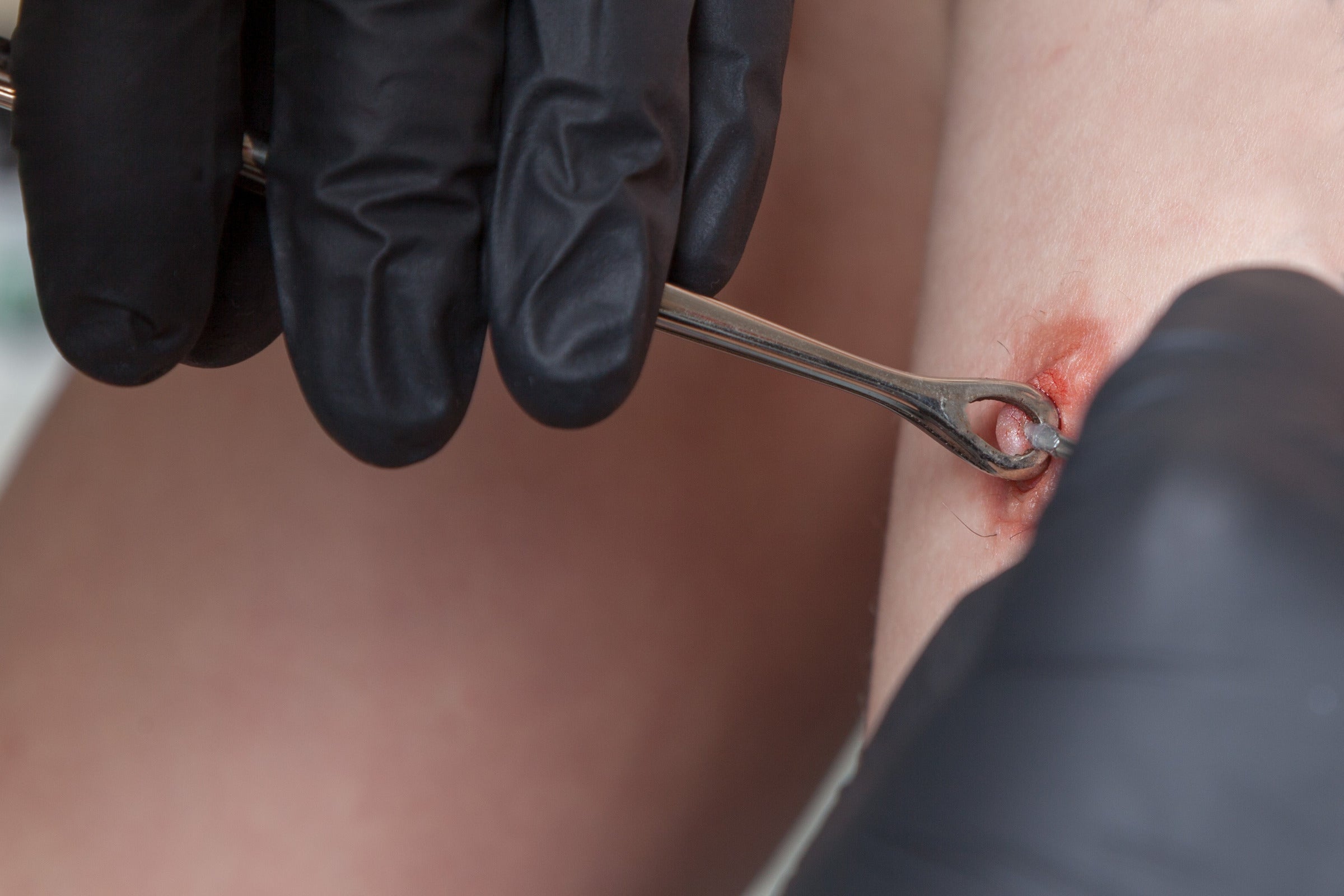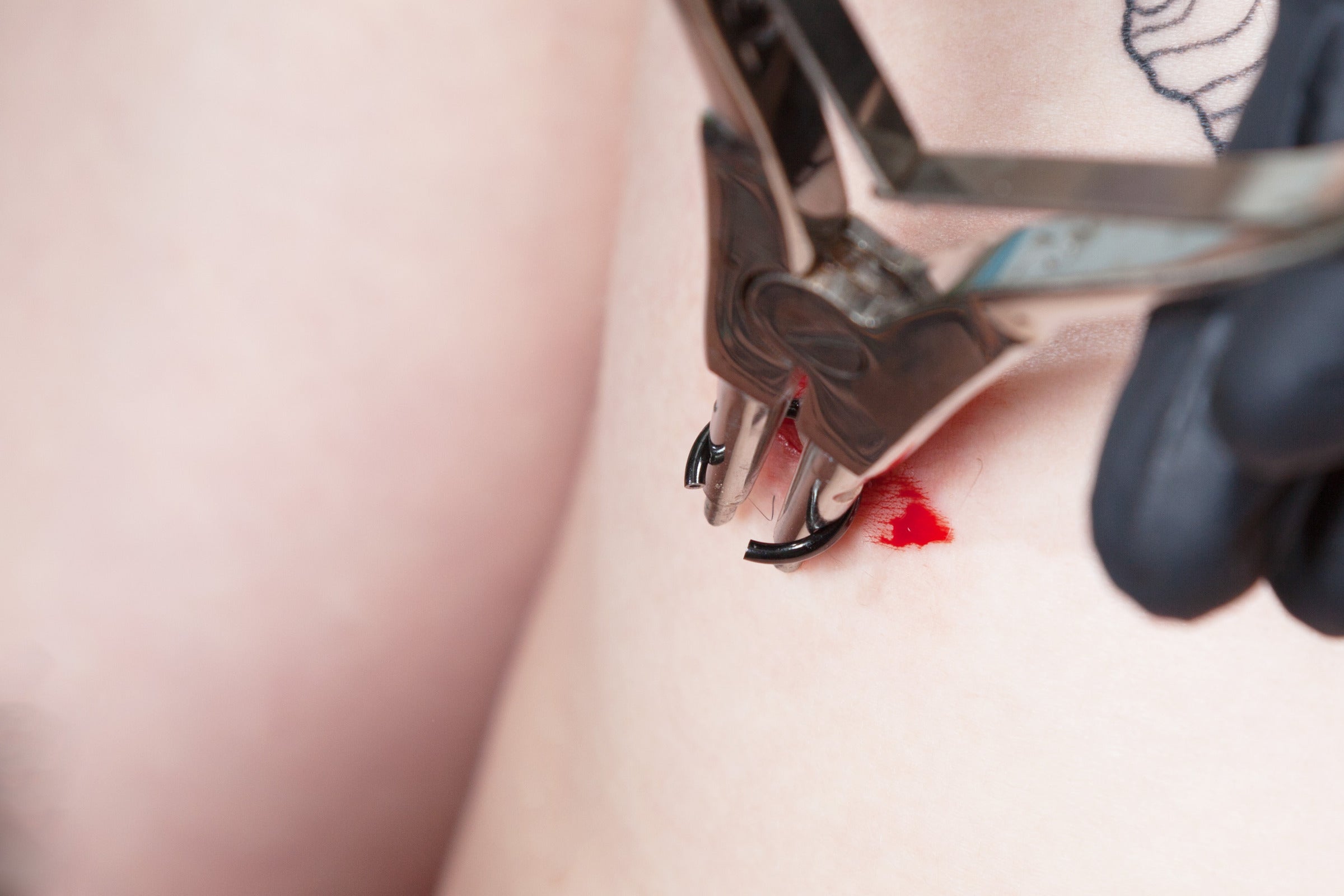All piercings are associated with pain, according to a report from Healthline. Nipple piercings are not necessarily more painful than other types of piercings.
Nipple piercings can be pretty painful, though the level of pain can vary from person to person. The piercing process is quick, so the pain usually lasts only a fraction of a second. It's essential to be prepared for discomfort during and after the procedure.
The article will cover everything you need to know about the pain level of nipple piercings, influencing factors, and complications.
How Bad Do Nipple Piercings Hurt: Pain Level & Factors

Nipple-piercing pain levels must be understood to make an informed decision and prepare mentally for the procedure. We will delve into nipple piercing pain levels, exploring the factors that influence the pain experienced during the process.
Pain Level of Nipple Piercings
On a general scale of 1 to 10, nipple piercings typically fall around a 5 or 6 in terms of pain level. This means the pain is usually moderate, described as a sharp pinch or pressure sensation during the piercing process.
Afterward, there may be some soreness and tenderness for a few days, which might rate around a 3 or 4 on the scale. Pain tolerance varies between people so personal experiences may differ.
Factors Influencing Nipple Piercing Pain
Pain levels associated with nipple piercings can be affected by several factors. These factors include:

Your Body's Makeup and Sensitivity:
The unique composition of your body, including the sensitivity of your nipples, plays a significant role in determining the level of pain you may feel. A person with higher nipple sensitivity may find the procedure more uncomfortable than others.
Factors such as breast tissue density, skin thickness, and nerve sensitivity can also contribute to varying degrees of pain.
The Piercer's Skill and Technique:
The expertise and technique of the piercer performing the procedure can significantly impact the level of discomfort experienced. A skilled and experienced piercer will employ strategies that minimize pain during the piercing process.
It is crucial to choose a professional piercer with a proven track record of piercing nipples successful and relatively painless nipple piercings.
Your Mindset and Stress Levels:
Your mindset and stress levels before and during the piercing can influence your perception of pain. Being mentally prepared, relaxed, and positive can reduce discomfort.
Practicing deep breathing, visualization, or listening to relaxing music can assist in creating a more relaxed state of mind, potentially reducing the perceived pain.
Nipple Piercing Pain: Complications

Nipple piercings, like any body modifications, come with a certain level of discomfort and potential risks. It's crucial to be aware of the common complications that can arise and how they might affect the overall pain experience. We'll delve into these complications and guide you on when to seek medical attention.
Common Complications and Their Effect on Pain
Here are the typical complications that you might encounter after getting a nipple piercing:
- Infection: This is a risk with any piercing. An infection can cause redness, swelling, and pain around the piercing site. It may also lead to pus or discharge.
- Bleeding: Some bleeding is expected immediately after the piercing, but prolonged or heavy bleeding can be a sign of a problem and can escalate the pain.
- Discharge: While some clear or white shots are typical during healing, colored or foul-smelling discharge can indicate an infection, leading to heightened pain.

When to Seek Medical Attention
If you're experiencing any of the following symptoms, it's time to consult a healthcare professional:
- Severe or increasing pain.
- Redness and swelling that doesn't improve after a few days.
- Discharge that is yellow, green, or has an unpleasant odor.
- Hives or difficulty breathing can indicate an allergic reaction.
Conclusion
Nipple piercing pain varies based on factors like anatomy, sensitivity, piercer skill, and mental preparation. Pain is subjective, and experiences differ. Potential complications like infection or bleeding can increase discomfort but can be avoided with proper aftercare and professional help.
Choosing an experienced piercer is crucial. If considering a nipple piercing, it’s important to be prepared and make an informed decision.
A moment of pain can lead to a cherished accessory. It’s about perspective. After weighing the pros and cons, approach the experience confidently and positively if you decide to proceed.











![The Recovery Time and Stages of Nipple Piercings [Best Practices]](http://drnumb.com/cdn/shop/articles/How_Long_Do_Nipple_Piercings_Take_To_Heal__3_Stages_Explained.jpg?v=1714373243)

